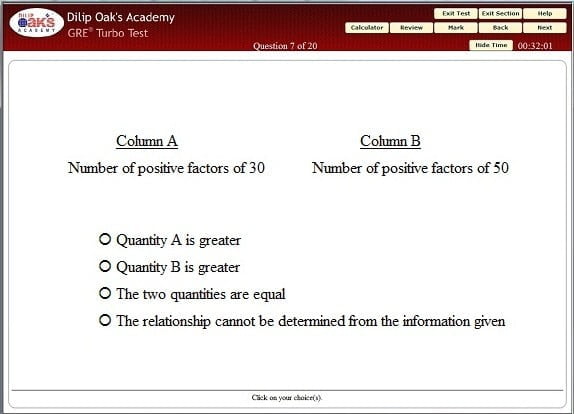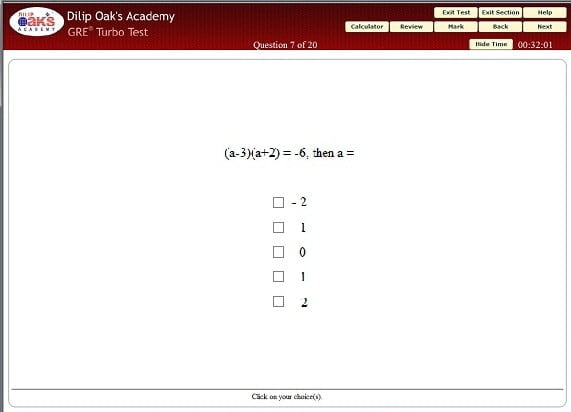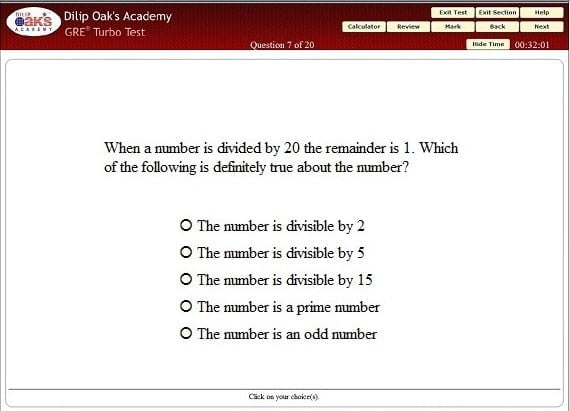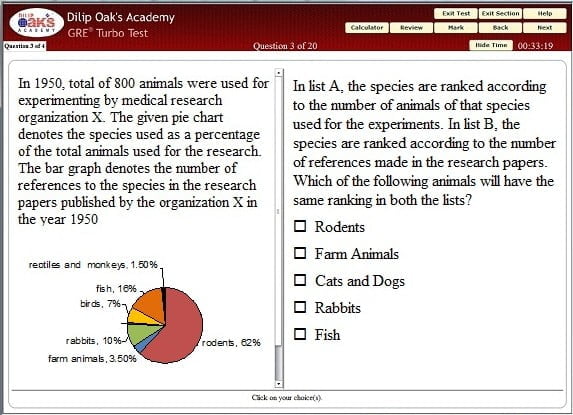Quantitative Reasoning in the Revised General GRE, like Verbal Reasoning has two sections with 20 questions each and for which 35 minutes solving time is given per section. Each Quantitative Reasoning section has mix of question types:
- quantitative comparison
- problem solving
- numeric entry questions (single and double)
- multiple correct choices (vertical check-box questions)
- single correct choice (i.e. radio button questions – vertical and horizontal)
- data interpretation
This makes a total of 7 different formats which are illustrated in the screenshots below. The screenshots are of the Dilip Oak’s Online test, but they will give you a good idea of what these formats will look like when you take the GRE computer-based test.

Get information on the Oak’s Online GRE test






An on-screen calculator is provided to help in the arithmetic calculations. The sections check the application of the basic math formulae in real life scenarios as well as accuracy in numeric calculations.
Tips for the Handling the On-screen Calculator:
- The calculator should be used when accuracy is required for numeric entry questions; in these the answer can be directly transferred from the calculator to the numeric entry box.
- Another case where the calculator is useful is in long, difficult calculations involving decimals. If a numeric answer is to be given in terms of fractions, however, the calculator will not useful.
- Remember also, that the onscreen calculator doesn’t provide advanced scientific functions.
Don’t use the calculator for simple calculations. It is sometimes faster to calculate or approximate the answer using the given options than to use the calculator.
Related Links
GRE Overview:
- Revised GRE Overview
- Challenges in the Verbal Section of the Revised GRE
- Reading Comprehension and Sentence Completion Questions: Tips
- Analytical Writing Overview
- Analytical Writing: Why 6 & 8 Are Important Numbers in this Section
GRE Practical Details:
- Registering for, Rescheduling and Cancelling Your GRE Test
- Getting Additional GRE Score Reports
- Selecting Which Scores the ETS Should Send to Universities
